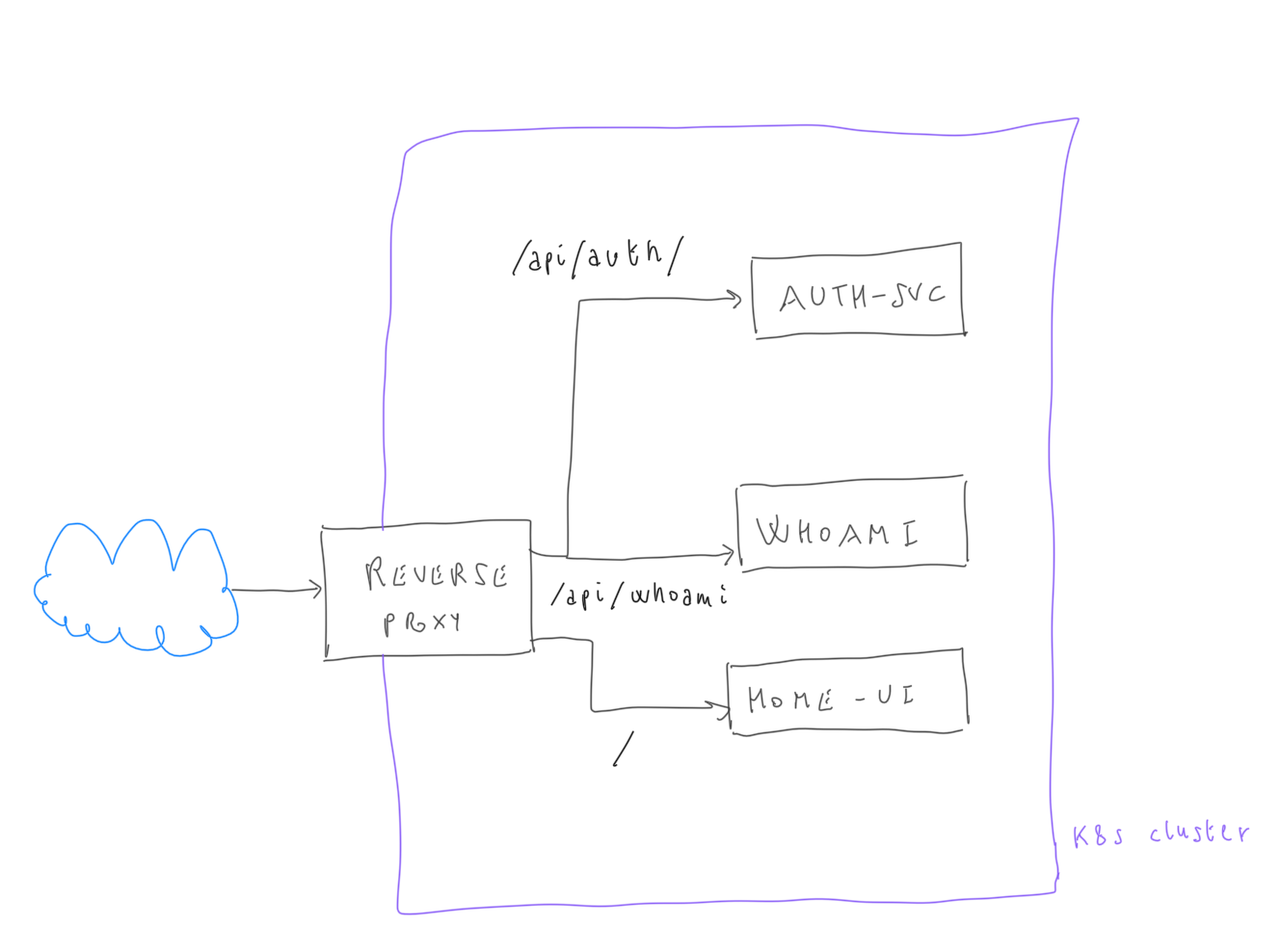This is a proof of concept implementation of the JWT standard on a distributed microservice architecture deployed with Kubernetes.
JWT tokens are signed with an RSA private key so other microservices can verify the authenticity using the public key. Tokens are configured to expire after a configurable period and can be refreshed with a specific call to the API.
It can be used as a starting point to develop a new application. Please note that not all the configurations are well suited for a production environment.
The system is composed of the following components:
- MongoDB as a storage
- authentication service: responsible to relase, refresh and revoke tokens. Passwords are stored on MongoDB
- whoami service: a simple demo that uses the JWT token to display user informations
- home: an angular application that presents a login form and a simple home page. The application stores the JWT token on a cookie and is capable of refresh it when it's expired
- reverse proxy service: handle the http requests from outside and redirect them to the correspondig services
Every module is released as a Docker image and all the application can be deployed on Kubernetes using the configurations provided. You can use minikube to test it under a laptop.
First you must have a Kubernetes installation up and running (you can use minikube to test it on a laptop).
Start by initalizing the volume used by Mongo to store the data with the script k8s-init-volumes.sh
Create the Mongo service and deployment with the following commands:
kubectl create configmap mongo-config --from-file=mongo/mongodb.conf
kubectl create -f mongo/k8s-service.yaml
kubectl create -f mongo/k8s-deployment.yamlWhen the deployment is ready forward the TCP port:
MONGO_POD_NAME=$(kubectl get pods -l component=mongo -o custom-columns=:metadata.name --no-headers=true)
kubectl port-forward $MONGO_POD_NAME 27017:27017Now you can point Robo 3T to localhost:27017 and create a new database called authone
Create a new collection called users with the following document:
{
"username": "[email protected]",
"password": "apNLRRRON1iRHvop7Wj7LUIPp71WhznNzaklH6lgmx4=",
"fullName": "Mario Rossi"
}
The password associated for the user is secure
Now you are ready to start all the other services, for semplicity you can launch the following scripts:
./k8s-undeploy.sh
./k8s-deploy.shIf all goes well, after a while you can connect to the login page:
- Add database to the scheme
- Write a script to initialize Mongo database and populate users collection with sample data
- Configure indexes on collections
- If you hit reload on browser the app shouldn't return 404, use: try_files $uri $uri/ /index.html;
- Review nginx.conf
- Implement roles-service
- Implement users-service

